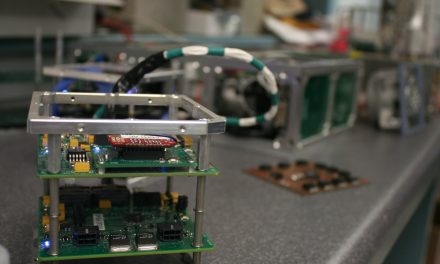The year is 1988. Freshman Brian Beyerle sits hunched on his bed, squinting back and forth from his scribbled notes to his book. Even from the third floor of Paty Hall, Beyerle could hear other residents shouting and playing on the basketball courts down below. He enters numbers into his calculator, attempting to ignore their shouts of glee as someone sinks a shot. Realizing he made a mistake, Beyerle rips the page from his notebook and balls it in his fist, chucking it into the waste bin amid its predecessors. He would much rather go to his friend’s room to play Commodore 64 or even downstairs to play pool, but this homework needs to be handed in at the beginning of class tomorrow. So Beyerle sharpens his pencil and starts again. No sooner than he had copied down the problem again did choppy guitar strumming flow into his room from across the hall. Sighing, Beyerle slides off his bed and slams the door shut before turning the volume up on the small radio set in the corner in order to drown out the boys’ shouts. Now all he could hear was the muffled echoes of the basketball being bounced against the ground and the crackling voices of sports news castors permeating the small room; Beyerle turns back to his problem. He briefly considers going upstairs to the fifth floor where there is electrical engineering tutoring, but he waits. He wants to solve this himself.
Twenty-eight years later, Brian Beyerle sits before his computer in Anniston, Alabama, creating a program by clicking and dragging various symbols into a sequence. If done correctly, this program should connect the GPS to the rest of the local transit bus’ electrical system. By the time Beyerle finishes the program, hours have passed; he leaves his office and heads to the bus, holding all of his hard work in his hand. If his program does not work, he will have to start again. The program loads, and Beyerle wrings his hands while he waits. Finally, the GPS blinks on, and Beyerle sighs in relief.

The North Engineering Research is one of the many new building where the majority of engineering classes are held.
Later, Beyerle pours over wiring schematics, inserting various marks with red pen among the symbols, which explain the electrical aspects of different car parts. After he corrects a schematic, Beyerle gives it to an associate, who will then draw up a new one and present it to Beyerle to check again, along with a harness. The harness, which is the physical aspect of the wiring, shows the size of connectors and terminals and the distances between them. Because of the new advances in technology, these processes have to be redone in order to keep up with new advancements, each time an improvement from the last.“Of course, as it’s gone on, it has gotten way more complicated,” said Beyerle, a former University of Alabama student who is now an electrical engineer for a transit bus manufacturer and manager of his department.
“When I first started, the engines had five electrical circuits, and now they have 50, 70, 100 and so on,” Beyerle said. “And we’ve added things like camera systems. The radio system is much more complicated, and we use GPS on vehicles that monitor the buses’ location and communicate back to the base station.”
Making an Impact
Although Electrical Engineering is becoming more complicated, electrical appliances are also becoming an important part of Western society. Electrical engineers have not only helped raise the standards of modern society, they have also secured jobs for themselves because now everything runs on electricity. “The conventional transportation system is under a big change with electric vehicles and the different types of alternative fuels that are currently being investigated,” said Mithat Kisacikoglu, an assistant professor at UA. Kisacikoglu specializes in electric vehicles, power electronics, renewable energy systems, the microgrid and smart grid.
“Our energy needs are increasing, as well as the electrification of everything,” Kisacikoglu said. “If you compare everything with electrical engineering in the 1970s or the 1980s, the mechanical side of things were more common. If you look at the single car for example, the mechanical parts and the electrical parts of the car are heavily increasing as we electrify the controls within a car.” Beyerle agreed.
“My job is more complicated because sometimes it’s a little harder to figure things out because it’s just data,” Beyerle said. “It's two wires that are used to do the job of 30. It’s a little harder to work on. It’s a little harder to figure out, harder to troubleshoot when there is a problem. From a work standpoint, when they are able to fit more things in a smaller space, that’s just more things to work on.” Moreover, the nation has become aware of the negative results of our energy& nbsp;consumption methods, leaving electrical engineers with the task of turning fuel-run objects into electronic devices, something they have been hard at work at.
“Over the years I have worked on hybrid vehicles and healthy integration of fuel cell vehicles, and I’ve worked on buses that were mostly dual battery,” Beyerle said. The number of hybrid cars produced domestically (including Canada and Mexico) has risen from zero in 1999 to a little over 206,000 in 2014, according to the U. S. Bureau of Transportation.“Right now, we can go and buy different kinds of electric vehicles if you want to; in the past you didn’t have those options,” Kisacikoglu said. In light of these changes, many people believe that the electrical engineering major has evolved significantly in the past 20 years.
“The spectrum of what you can work with as an electrical engineer has broadened a lot,” said Joe Nichols, an electrical engineering major and Honors student at UA. “It was definitely more hands on then. It’s definitely more theoretical now. From what I’ve heard from employers is that they love our knowledge, but they don’t understand our application because they’ll get people right off their desk”.

“I’ve always felt passion, if you will, about being able to give something back to my community, and if that comes in what I can do in generation of power and what I can do to improve on that, that would be great,” said Joe Nichols, a junior majoring in Electrical Engineering at The University of Alabama. Nichols is also in the Honors College.
“They’ll know all these things about electricity, its properties, how it works and what you need to do for this big, complex circuit to work, but they couldn’t explain to you how a socket works.” The question of the socket has proved somewhat controversial among the electrical engineering community at the university.
“So while I agree that there is more theoretical now, I would say the problem now is that most of the students you meet that do theoretical and get a job I have, they had trouble because they struggle with the hands-on part, and you have to have some of that,” Beyerle said. Sushma Kotru, associate professor at the university also backed this, asserting that, while students are advancing in the realms of technology, they are sometimes lacking in common sense, completely blanking on things they should know. However, some felt as that knowing how a socket worked does not accurately assess one’s knowledge of electrical engineering.
“I wouldn’t understand how a socket works unless I worked with a company that produced sockets; then I would have to do the calculations for what size metal components and what kind of wires would be connected,” said Will Hagar, a UA Honors student and electrical engineering major. “Electrical engineering is more of how electricity works and less how things utilize electricity. There’s a lot of understanding how computers work and less individual electrical components.” Kisacikoglu also disputed the necessity of knowing how a socket works. “I would not ask how a socket works, but I would suggest people look into very basic definitions of how electricity is generated,” Kisacikoglu said. “I would suggest people read the biography of Nicola Tesla. I wouldn’t simplify it to how an outlet works, but how energy is produced. Learn about the profession and why these things are important.”






